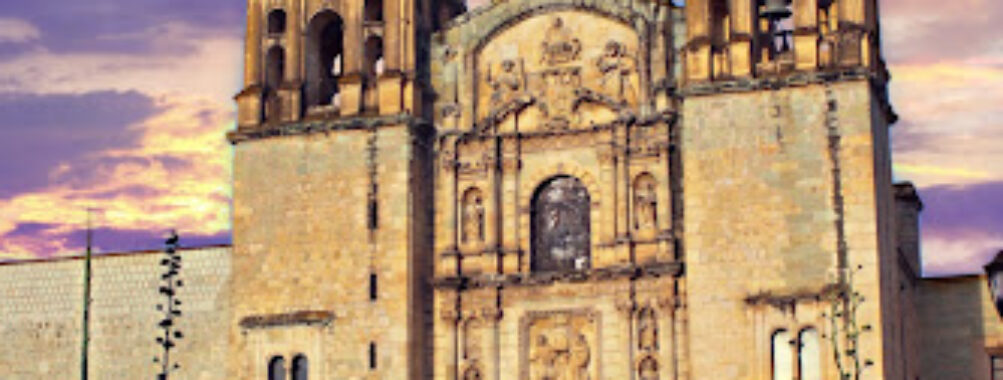
Oaxaca
“`html
Table of Contents
Description
Oaxaca de Juárez, usually just called Oaxaca, is the kind of city that lingers in your memory long after you’ve left. It’s the capital of the state of Oaxaca in southern Mexico, and it’s a place where history, food, art, and daily life all weave together in this messy, colorful, and downright fascinating way. What struck me most the first time I visited was how the city feels both deeply traditional and surprisingly modern at the same time. You’ll see Zapotec grandmothers in embroidered huipiles bargaining at the markets just a few blocks away from college students sipping mezcal cocktails in hip cafés. Somehow, it all works together.
It’s not a city that tries too hard to impress you—it just is what it is. The colonial architecture, with its green cantera stone buildings, feels timeless. The cobblestone streets aren’t always easy on the feet, but they slow you down enough to notice the details: the smell of fresh tortillas, the sound of street musicians, the sight of papel picado fluttering overhead. And while Oaxaca is well-known for its UNESCO designation, mezcal production, and Day of the Dead celebrations, there are so many little moments—like stumbling into a family-run chocolate shop or watching kids chase each other through the Zócalo—that give it soul.
That said, Oaxaca isn’t perfect. It can be crowded during peak festivals, and sometimes the traffic in the narrow streets feels chaotic. But honestly, those quirks add to the charm. It’s a city that doesn’t polish itself too much for outsiders, and that authenticity is what keeps pulling travelers back.
Key Features
- Rich Indigenous Heritage: Home to Zapotec and Mixtec traditions that are still alive in language, crafts, and rituals.
- World-Famous Cuisine: Known as the “land of seven moles,” Oaxaca’s food scene is a feast of flavors, from tlayudas to street-side memelas.
- Colonial Architecture: Green cantera stone buildings, baroque churches, and charming plazas define the city’s look.
- Festivals: Guelaguetza, Day of the Dead, and countless smaller celebrations fill the calendar year-round.
- Markets: Bustling spaces like Mercado Benito Juárez and Mercado 20 de Noviembre where you can shop, eat, and people-watch.
- Art and Crafts: From colorful alebrijes to black clay pottery, local artisans create works that are both traditional and modern.
- Mezcal Culture: Countless mezcalerías where you can taste smoky varieties straight from small-batch producers.
- Nearby Attractions: Monte Albán ruins, Hierve el Agua’s petrified waterfalls, and mezcal villages just outside the city.
Best Time to Visit
The best time to visit depends on what kind of experience you’re after. Personally, I love late October into early November when the city transforms for Day of the Dead. Altars pop up everywhere, marigold petals line the streets, and there’s this electric feeling of reverence mixed with joy. But if you’re crowd-averse, you might prefer January through March, when the weather is dry, sunny, and not overwhelmingly hot. Summer brings the Guelaguetza festival in July, which is spectacular but also means higher prices and packed hotels.
One thing to keep in mind: Oaxaca’s climate is relatively mild year-round, thanks to its altitude. Evenings can get chilly, so don’t forget a light jacket. And if you’re visiting during the rainy season (roughly May to September), expect afternoon downpours that can actually be kind of refreshing after walking around in the sun.
How to Get There
Oaxaca is easier to reach than many first-time visitors expect. The city has its own international airport (OAX), which connects directly with Mexico City, Guadalajara, Tijuana, and even some U.S. cities like Houston and Los Angeles. If you’re already in Mexico, flying from Mexico City is quick and often affordable.
For the more adventurous (and patient), there’s the option of taking a bus from Mexico City. It’s about a 6 to 7-hour ride through winding mountain roads. I’ve done it once, and while the views were stunning, I’ll admit I got a little carsick. If you’re prone to motion sickness, maybe stick with the flight.
Once you’re in Oaxaca, getting around is straightforward. The city center is walkable, taxis are abundant, and colectivos (shared vans) can take you to nearby towns and attractions for just a few pesos.
Tips for Visiting
Here are a few things I wish someone had told me before my first trip to Oaxaca:
- Bring cash: Many markets, small restaurants, and artisan shops don’t take cards. ATMs are available but can run out of cash during festivals.
- Eat like a local: Don’t just stick to restaurants. Street food here is safe, delicious, and often the highlight of the trip. Try a tlayuda from a street stand at least once.
- Learn a few Spanish phrases: While many people in tourism speak English, a little effort goes a long way in connecting with locals.
- Plan around festivals: If you’re visiting during Guelaguetza or Day of the Dead, book accommodation months in advance. Prices rise quickly.
- Take it slow: Oaxaca isn’t a city you rush through. Spend time wandering markets, sipping coffee in the Zócalo, or just people-watching. That’s where the magic happens.
- Respect traditions: Many celebrations and rituals are deeply spiritual. Be mindful with your camera and always ask before photographing people.
- Explore beyond the city: Monte Albán, Hierve el Agua, and mezcal villages like Santiago Matatlán are easy day trips that give you a fuller picture of the region.
In the end, Oaxaca is the kind of place that rewards curiosity. The more you wander, taste, and talk to people, the richer your experience will be. And don’t be surprised if you leave already planning your return—most travelers do.
“`
Location
Places to Stay Near Oaxaca
Find and Book a Tour
Explore More Travel Guides
No reviews found! Be the first to review!